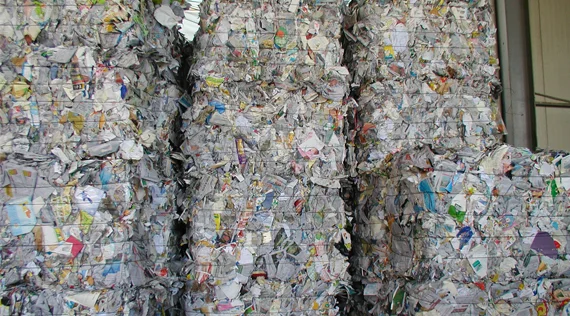
SPOKANE (Scrap Monster): A new study conducted by Trucost for the American Chemistry Council (ACC) has highlighted the environmental and cost benefits of using plastics in comparison with other alternatives. The report is titled “Plastics and Sustainability: A valuation of environmental benefits, costs and opportunities for continuous improvement”. The study reveals that the use of plastics in consumer goods and packaging reduces environmental costs by nearly four times.
According to the report, global plastics production has grown twenty-fold during the 50-year period from 15 million metric tons in 1964 to 311 million metric tons in 2014. Today, plastics is present everywhere, offering numerous benefits to society through its ever-expanding applications. However, the environmental impacts associated with production and disposal of plastics too has increased along with its use. The environmental costs include emission of green house gases. Improper disposal of plastics also pollutes land and water and leads to marine debris in oceans. Increasing the rate of municipal waste collection could curb the input of waste into the oceans.
The Trucost study analyzes the effects of plastics by quantifying the environmental costs of plastic in consumer products and packaging by replacing them with alternative materials. The study identifies those sectors that would be exposed to severe environmental risks if plastics were replaced with alternative materials. It also suggests ways to further reduce the environmental costs of plastics and improve sustainability features through various recommendations including efficient packaging design.
The environmental cost of plastic in consumer goods is 3.8 times less than the alternatives materials that would be needed to replace plastic. Although alternative materials such as glass, tin, aluminum and paper are viable alternatives to plastic in many consumer goods applications, they have higher environmental costs in the quantities needed to replace plastic. Trucost estimates that substituting plastic in consumer products and packaging with alternatives that perform the same function would increase environmental costs from $139 billion to a total of $533 billion. In most cases the environmental cost per kilogram of alternative material is less than that of plastic. However, on average over four times more alternative material is needed (by weight) to perform the same function.
As per study, the environmental cost to society of consumer plastic products and packaging was over $139 billion in 2015. Going by the current trend, it is expected to grow to $209 billion by 2025.
The plastics manufacturing industry has significant opportunity to reduce the environmental costs of plastics through its operations and supply chains. The total environmental cost of producing plastic materials for the consumer goods sector was over $60 billion in 2015. However, transport of these materials to market added a further $53 billion in environmental costs.
The report recommends that $7.6 billion in environmental costs could be saved if the global plastics industry doubled its use of electricity from low-carbon sources such as wind, solar, and hydro power, or $15.2 billion with a switch to 100% low-carbon electricity.Also, $7.3 billion in environmental cost savings could be made through if more efficient packaging designs could be developed in the food and soft drinks and ice sector. $10.6 billion in environmental cost savings could be achieved through a 20% improvement in the fuel efficiency of the vehicle fleet used to transport plastics, through technological change or modal shift toward lower emission transport modes such as rail.
| Copper Scrap View All | |
| Alternator | 0.32 (0.01) |
| #1 Copper Bare Bright | 3.77 (0.07) |
| Aluminum Scrap View All | |
| 356 Aluminum Wheels (Clean) | 0.73 (0.02) |
| 6061 Extrusions | 0.64 (0.02) |
| Steel Scrap View All | |
| #1 Bundle | 475.00 (0) |
| #1 Busheling | 495.00 (0) |
| Electronics Scrap View All | |